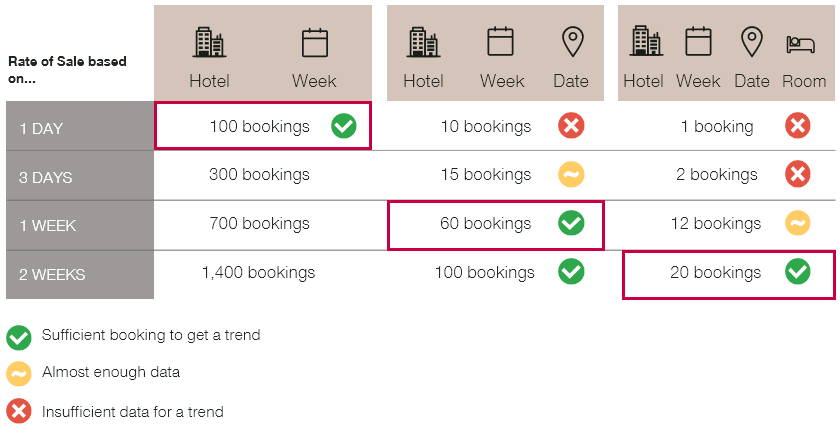Revenue management systems are an immensely valuable tool in the travel, hospitality, and leisure industry. The foundational functionality of predicting the future using data from the past, no longer works. Companies must use current trends and consider present price elasticities as the basis for optimising their rates of the future.
What is a revenue management system?
Revenue management (RM) is selling the right product to the right client at the right moment at the right price via the right distribution channel with the best cost efficiency. In the travel industry, revenue management systems are using analytics to help predict customer behavior. This helps to optimize product availability and price to maximize revenue.
The main goal is to increase revenue while selling the same number of products or services, such as hotel rooms. It’s essentially about matching supply and demand by using dynamic pricing models.
Why revenue management systems are no longer working
The past few years have falsified the core assumptions and logic of revenue management solutions. They used to rely on a widely accepted assumption that history repeats itself and is the best indicator of future performance. However, “the now” is very different from the past; and the latter can’t be used effectively to predict the future. Consequently, a different approach has become a necessity.
5 steps to optimize your revenue management tool
What does that mean for revenue management systems and users? How should revenue systems be built so that they are fit for purpose? The list below outlines five fundamental changes required.
They are also the foundation for Simon-Kucher Dynamica | SmartRates. This revenue management and dynamic pricing tool was developed by our Simon-Kucher Engine team to support travel and hospitality businesses.
1. Move from internally focused data to external demand drivers:
Typical revenue management systems are focused mainly on internal data. They consider factors such as how bookings are performing compared to expectations, and the current load factor or occupancy.
Processes within a revenue management software need to collect external demand indicators. Systems must have the ability to monitor these indicators. They should also incorporate them into their forecasting algorithms.
Simon-Kucher Dynamica | SmartRates enables travel and leisure businesses to incorporate external data. This provides a high-level overview of demand patterns and empowers pro-activeness in pricing and revenue management decisions.
2. Build dynamic forecasts that react quickly to recent trends:
Revenue management systems have components, including booking curves and elasticities, that are based on data from the previous year. This can be a problem because the data may no longer be relevant. Not completely wrong, but data from more recent dates are far more relevant.
In our revenue management system, we have built proprietary demand forecasting methods that pick up recent trends through a dynamic hierarchy. The diagram below outlines how dynamic forecasting methods work. They produce adaptive predictions at different levels of aggregation. This helps to achieve a balance between relevance and accuracy.

3. Move away from static price elasticity models:
Machine learning algorithms can quickly and effectively detect changes in price elasticity. This helps to analyze demand patterns in response to changes in internal and external prices. These price changes can be monitored continuously.
Simon-Kucher Dynamica | SmartRates is built with a sophisticated machine learning algorithm. Our algorithm ensures that price elasticity is constantly updated to reflect recent trends. This functionality enables users to adapt their pricing decisions quickly and effectively – saving them both time and money.
4. Empower revenue managers to work with RM software:
Our world moves quickly. To be commercially agile, decision support systems must be flexible.
They must also allow users to include their knowledge in the decision-making process. Our software has built-in features to allow users to override core components like booking curves and target objectives. This enables users to utilize the strength of machine power but still have the human nous to maximize revenue opportunities.
5. Ensure your RM system is customized to your needs:
Let’s face it: Most revenue management systems in the market are equally brilliant as they are non-transparent. As black boxes, they are highly effective if they are right, but an anathema if they are wrong. If the latter scenario happens, you can’t find the cause of the failure.
A revenue management solution should be easy to customize to meet the necessary requirements. It should also be easy to understand, so users can make the most of it. Additionally, they should know how to use it in the event of unexpected situations.
Conclusion: RM systems need some fundamental changes to be most effective again
To revive traditional revenue management systems as the valuable tools they have once been, travel, hospitality, and leisure businesses must ensure they use external demand indicators. They must also be able to dynamically forecast current trends and consider present price elasticities. Additionally, they must incorporate their users' experiences and ensure they can be fully personalized.








